Red steel ribbons are parted like curtains to welcome visitors into this museum in northern Japan by Canadian studio Molo (+ slideshow).
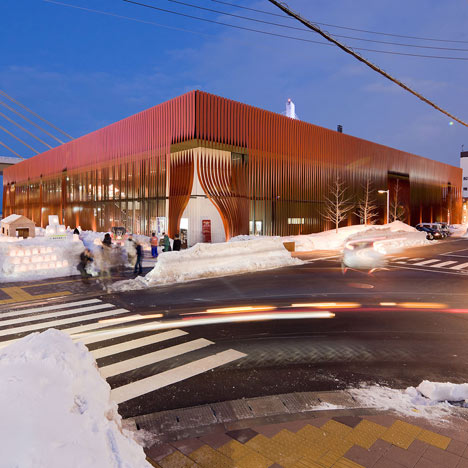
Named Nebuta House, the building was designed to house the huge paper lanterns that parade the city streets of Aomori for five days each summer during the festival of Nebuta Matsuri.
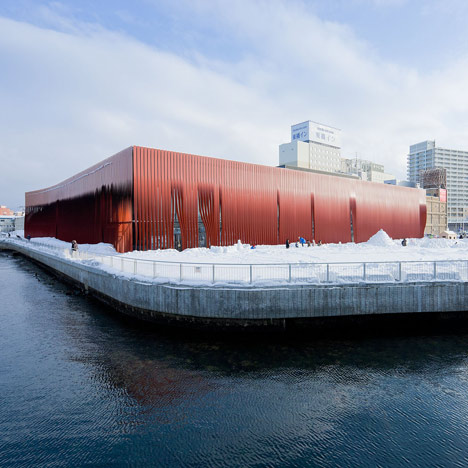
With the appearance of mythical warriors, the Nebuta lanterns are used to tell stories about heroes and demons during the festival, before five are chosen for a year-long exhibition in the museum’s central hall.
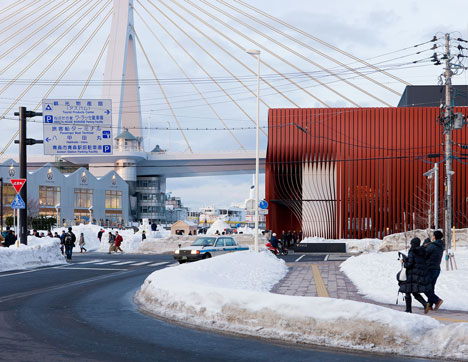
The lanterns glow brightly in the dark hall and their reflection in the glossy floor is intended to represent the final day of the festival when some are floated on the sea.
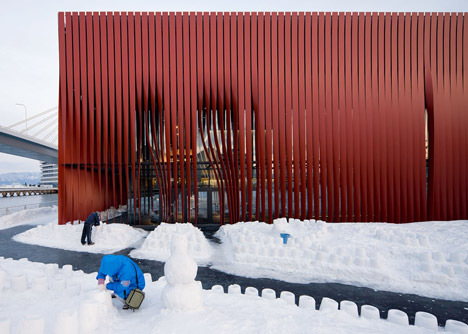
Inspired by the paper lanterns, the architects copied the movements of strips of paper caught in the breeze to generate the twists of each ribbon on the museum’s exterior.
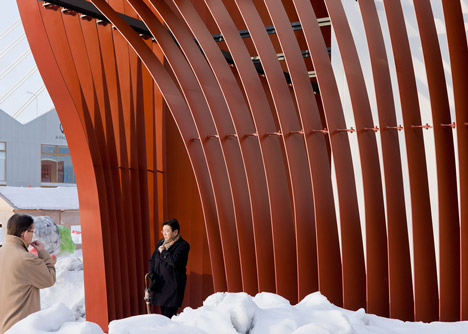
These twists create openings that let in light and lead into a sheltered passageway between the ribbons and the glazed inner facade.
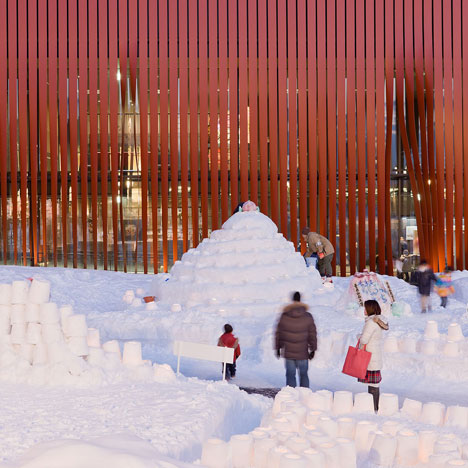
During the festival the lanterns enter and leave through a huge sliding door at the back of the building, while more sliding doors connect the hall with a theatre above.
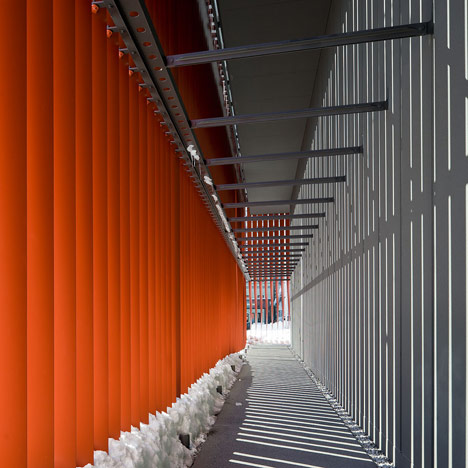
With both sets of doors open, visitors can see down from the theatre towards the Aomori Harbour and Hakkōda mountains.
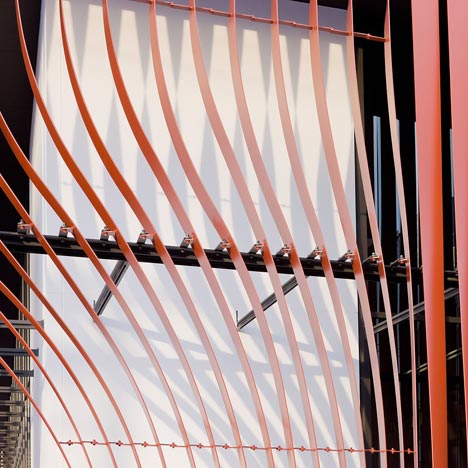
We previously featured a Molo project to create paper partitions for emergency shelters.
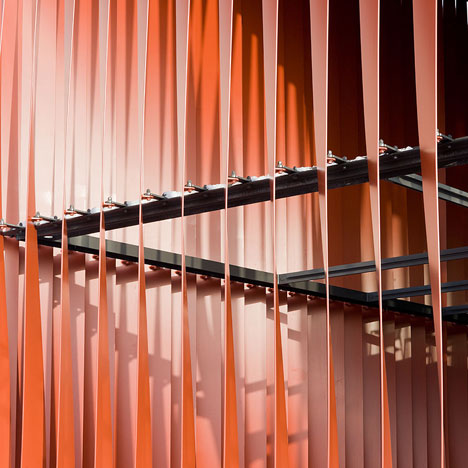
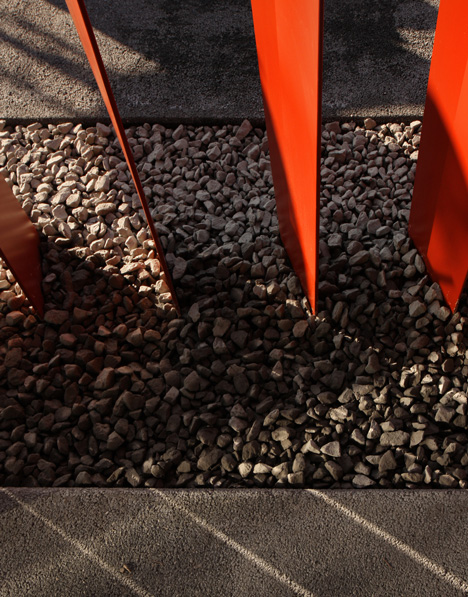
Photography is by Iwan Baan, except where otherwise indicated.
Here’s some more information from the architects:
Nebuta House (ねぶたの家 ワ・ラッセ) is a museum and centre dedicated to all aspects of the Nebuta festival and its creative culture in the Northern Japanese city of Aomori. In 2002, Stephanie Forsythe and Todd MacAllen won an international architecture competition for their design of a housing and community project in Aomori, Japan. The competition was judged by Tadao Ando and Jean Nouvel, and sponsored by the City of Aomori.
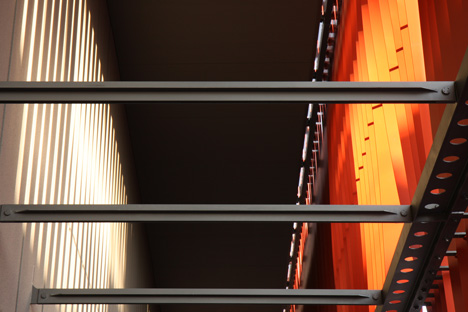
Over the project’s course, the program evolved from housing and community facilities into a unique cultural building inspired by the craftsmanship and spirit of Aomori’s Nebuta Festival. In 2007, Forsythe + MacAllen (molo design) invited ddt/Arch and Frank la Rivière Architects Inc, together with the structural team of Kanebako Structural Engineers and the services engineers of PT Morimura & Associates Ltd. to work in collaboration with molo to develop the construction documents and oversee construction of the Aomori Nebuta House Museum.
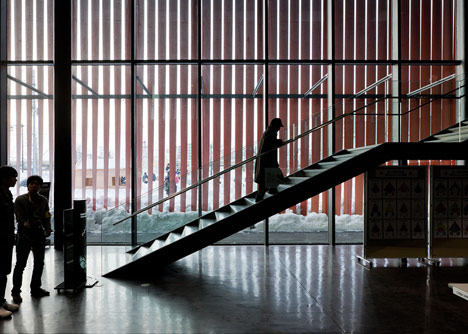
Nebuta Matsuri, one of the three most famous and largest festivals in all of Japan, it is a form of storytelling during which heroes, demons and creatures from history and myth come to life as large-scale (9 x 7 x 5.5m) paper lanterns (Nebuta) illuminated from within. The Nebuta House is a dwelling for these mythical beings to reside.
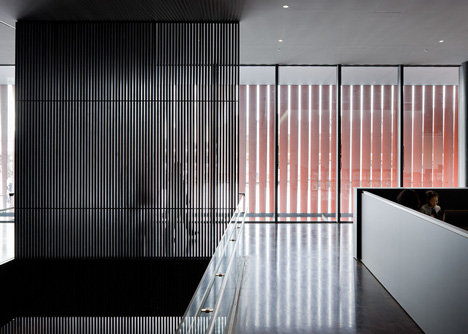
Each year the five best Nebuta, selected for their creative artistry and craftsmanship, will take the place of the five Nebuta selected from the previous year. Functionally the institution is meant to share the tradition, archive the history and nurture the future of this unique cultural art form. Located in front of Aomori train station, where the city meets the sea, the building opened January 5th, 2011.
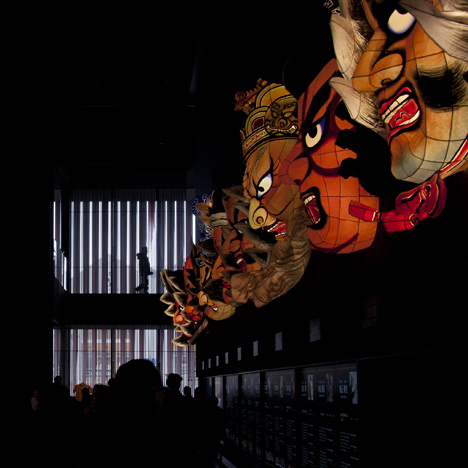
The building is enclosed by ribbons of twisted steel, enamel-coated deep vibrant red and individually shaped to create variation: openings for light, areas of opacity, views, or opportunities for pedestrian circulation. For each steel ribbon, the bottom was set to a unique and specific angle, with thought to how sunlight would permeate the ribbons as it moved throughout the day, while the top part of each ribbon remains parallel to the building.
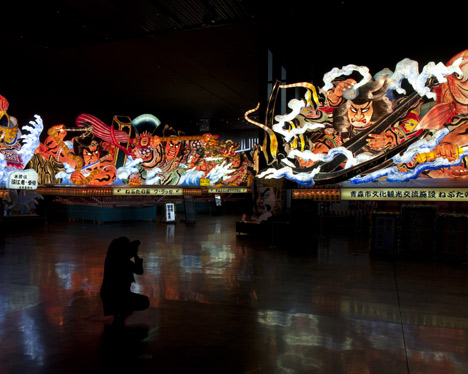
In between these fixed points, some of the ribbons follow a natural curve while others were selected to have further bending and shaping to create larger openings and an abstract expression of wind. The steelworkers executed great skill and judgment interpreting the images from the 1:50 scale model that had been made from ribbons of paper, into ribbons of steel (9mm thick x 300mm wide x 12 meters high).
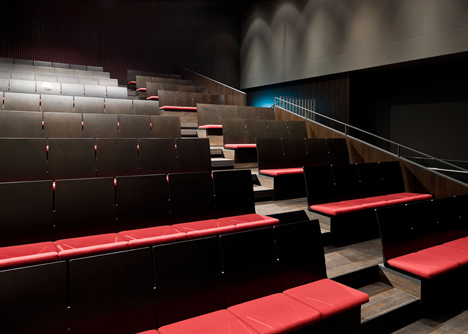
In this way each ribbon was individually crafted during prefabrication, then manually adjusted on-site during installation. No part of the finished screen is the result of computer-aided fabrication; like all things handmade, human intervention enlivens function and expression.
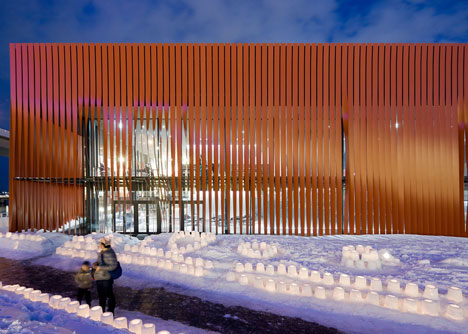
The ribbon screen façade creates a sheltered outdoor perimeter space called the “engawa”, a spatial concept originating in traditional Japanese houses. In this case, a dwelling for giant paper heroes, demons and creatures, the engawa acts as a threshold betweenthe contemporary world of the city and the world of history and myth.
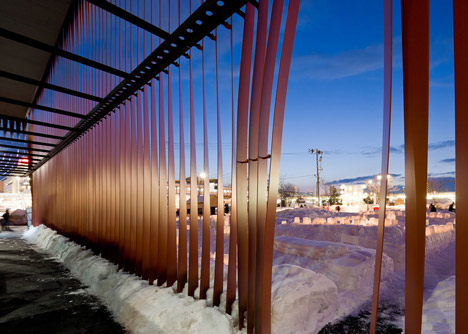
Shadows cast on the walls and floor through the exterior ribbons have the effect of creating a new material. Shadow and light become another screen – the convergence of material, light, shadow and reflection changing with the sun and weather. Homogeneous, grey, box-like buildings constitute much of the surrounding cityscape.
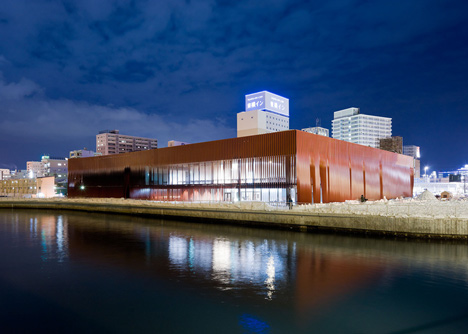
Commonplace objects like power lines and vending machines are dispersed throughout the uniformity. Here, the building appears as a vibrant curtain at the street’s end – activating the streetscape, transforming everyday experience into theatre. Bicycles and traffic passing by, city workers breaking to eat or children playing in the snow take on a quality of performance and play.
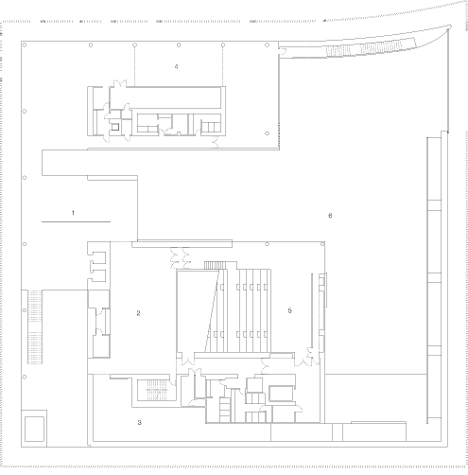
Inside, a shadowy dwelling for the Nebuta is shaped by the layers of screens and volumes of ancillary rooms. The volumetric juxtaposition accommodates many possible uses and perspectives. The interior is black, like a black box theatre. The abstraction of materiality, detail and colouring of the building allow visitors an intimate focus on the story being told. Luminous Nebuta appear suspended in the darkness of the hall, their vibrant colours reflected in the rippled, water-like floor. This is a subtle analogy to the last day of the festival when some of the Nebuta are set out to float on the sea.
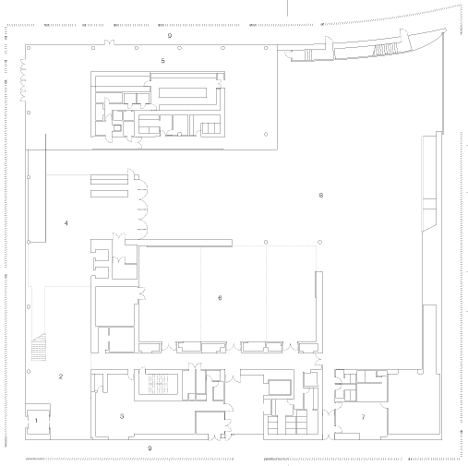
Opening a set of giant sliding doors will connect the large volume of the Nebuta Hall with an upper level theatre and multi-purpose spaces below (for music, activities and exhibits) Providing a dynamic visual connection to the Nebuta during musical and theatrical performances, encouraging creative juxtapositions and flexible use.
Click above for larger image
During major events, the towering Nebuta exit and enter the building through another giant sliding door. When sitting in the theater with both sets of sliding doors open, one can see the vibrant Nebuta below, and beyond, Aomori Harbour and the Hakkōda mountains. Despite the challenges of designing an important cultural building while respecting a conservative budget, the evolution of the building’s type and program stands as symbolic foreshadowing of the many creative possibilities for use.
Click above for larger image
Already, programming has demonstrated a broad range of uses: workshops, conferences and new cultural events are taking place. Perhaps the building can help to usher the time-honoured tradition of Nebuta into a contemporary era, offering a place to share ideas and bring creative minds together, even artists of different cultures and disciplines. The building elevates Nebuta in the public life of the city, celebrating the stories and impressive craft of the ephemeral paper floats and the people who make them.
Click above for larger image
Dimensions
The Nebuta House site occupies 13,012 m2 on the waterfront of Aomori Harbour. The total building area is 4,340 m2 with a gross floor area of 6,708 m2 which includes the engawa (covered outdoor walkway enclosed by steel ribbon screen), utility basement, two levels to accommodate the program of exhibit hall, theatre, multi-purpose / music rooms, restaurant and gift shop. At the highest point the building stands at 15.4 m, the first level is 4.5 m floor-to-floor, the second level is 5.9 m; both entrance and exhibit halls are double-height at 8.5 m.
Click above for larger image
Materials
820 steel ribbons, 12 m tall, encircle the glass-and-steel structure. The prefabricated ribbons are enamel-coated deep red (inspired by the traditional local lacquer ware) and have been installed using a four-point connection system, manually adjusted on-site.

The building sits on 177 piles that go 27 m deep through fill to reach solid ground. In consideration of the soft sea side soil, the lightness of the steel structure was important and adopted early into the design process.

The exposed round steel columns are as slender as possible – this also helps give the structure a feeling of physical lightness. The floor to ceiling window mullions are black, galvanized solid steel and fasten to the steel structure of slender columns to contribute structural support to the steel ribbon screen of the façade (horizontal wind load). Segments of the exterior wall are made up of prefabricated lightweight concrete panels.

The interior is partitioned by a series of black, galvanized steel screens and panels, physically enclosing the space while maintaining visual connection beyond at certain angles. The galvanized steel used in the interior is treated with a patination process that blackens the metal while retaining the crystalline pattern of zinc galvanization.

Architectural Design and Site Supervision:
molo (Todd MacAllen + Stephanie Forsythe)
d&dt Arch (Yasuo Nakata)
Frank la Rivière Architects Inc (Frank la Rivière)
Structural Engineering: Kanebako Structural Engineers
MEP: PT Morimura & Associates, Ltd
Construction: Kajima – Fujimoto – Kurahashi Construction JV
via : http://www.dezeen.com/2012/07/20/nebuta-house-by-molo/10/
via : http://www.dezeen.com/2012/07/20/nebuta-house-by-molo/10/







